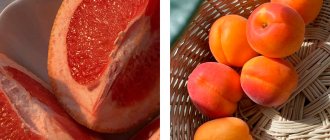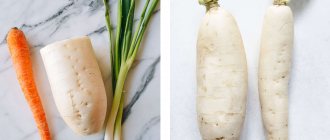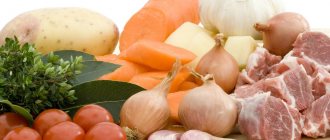With the arrival of cold weather, it is no coincidence that we are drawn to cinnamon rolls and spicy pumpkin soup. It turns out that spices can make winter much more pleasant.
Spices and seasonings are not taken seriously in our part of the world.
Is some fragrant dust on the tip of a knife capable of making us healthier and happier? But in the Middle East and Asia, spices have long been revered as medicine and are seriously prescribed along with medicines. This could be considered a funny cultural fact if not for the results of modern scientific research. Laboratory observations show that the usual spice powders are not just a tasty food additive, but also an effective way to influence the functioning of the body and a person’s well-being. It is known, for example, that the aromatic compounds in cinnamon can activate areas of the brain responsible for cognitive abilities and memory. This is probably why we remember good days with buns and cocoa for the rest of our lives (unlike important phone numbers). Another example is ginger: this root, among other skills, quickly copes with nausea of any nature. Thanks to scientists, turmeric has become a real superstar of the spice world in recent years. The curcumin molecule in its composition actively fights inflammation and even cancer cells in laboratory conditions.
This all sounds great, but in fact, the authors of scientific papers themselves urge us to treat sensations with healthy skepticism. Situations simulated in laboratories are far from the same as the behavior of a product in a real human body with its individual characteristics. So far, scientists only understand that herbs and spices have medical potential and the possible benefits can be enormous. But it is also clear that a cancer cure based on turmeric or ginger will not appear in pharmacies tomorrow, and perhaps never will appear. Nevertheless, science recommends using spices every day, especially in the cold season, for everyone who has no contraindications or diagnoses incompatible with hot, spicy and aromatic additives. Here are just a few reasons to have a spice rack in your kitchen.
More benefits from regular food
The vast majority of roots and powders used in cooking are plants grown in the tropics and highlands. Life in a harsh climate would be impossible for them without reliable protection. Most often it is caused by rich yellow, red, green and brown antioxidant pigments. They make plants resistant to adversity such as the scorching sun, pests, and temperature changes. In the human body, these chemicals are also able to restore order: bind free radicals, improve blood circulation and metabolism, and stimulate detoxification. In addition, exotic and Mediterranean spices do not contain the same phytonutrients as the vegetables and fruits traditional to our region. And food variety is one of the pillars of proper nutrition, especially in winter, when the choice of fresh foods is limited.
Another great bonus of using spices is that their rich flavor and aroma allow you to cook with less or no salt. For residents of large cities, this is vital: according to WHO estimates, the average citizen eats almost twice as much sodium chlorine as is needed for health. For which he quickly pays with a tendency to edema, problems with the heart and blood vessels, joint diseases, etc.
Use the rainbow principle with your seasonings throughout the day. The more colorful your menu is, including through spices, the more beneficial nutrients will enter the body.
Fatty fish
Photo: envato.com
Fish with a high content of Omega-3 essential fatty acids is simply necessary for the normal functioning of the female body. Fatty acids promote the production of serotonin, which prevents depression in harsh realities and helps maintain youthful skin without expensive cosmetic procedures.
Higher mood and energy levels
The lack of sunlight affects literally all systems of the body. But thanks to spices grown under the bright sun of the tropics, you can live through the winter with a smile on your lips and a charged battery. The main thing in our good mood is chili pepper and other hot varieties. The active substance capsaicin promotes the synthesis of joy hormones endorphins, which means it reduces the risk of seasonal blues.
Almost all spices are characterized by the ability to speed up metabolic processes and tone the body. Of course, it would be naive to expect an energy boost from one serving of Indian curry, but regular use of spices is associated with better metabolism of fats and carbohydrates and overall vigor.
The ability to relieve anxiety and calm, which is also important in winter, is also attributed to cinnamon. It is no coincidence that the smell of apple pie with this spice has become a symbol of home comfort and is replicated in millions of scented candles every year. But most of all, scientists believe in color therapy. Seasonings of the red-yellow spectrum can have a beneficial effect on the brain, exhausted by the grayness outside the window, so cooking rice with a pinch of bright spices is a good winter idea for many reasons.
Contrary to the stereotype, cinnamon is good for more than just pies and cappuccino. Marinade for meat and poultry will only benefit if you add spice to it. For example, according to the scheme “salt, pepper, olive oil, cinnamon, cloves, nutmeg.”
Harm of phytoestrogens to health
The effect of natural estrogens on the body largely depends on the age and hormonal background of the woman.
In young healthy women, preparations with phytohormones suppress estrogen synthesis, which is fraught with the development of disturbances in the reproductive system and fertile functions.
Possible side effects:
- weight gain;
- dysfunctions of the liver, thyroid gland, and gastrointestinal tract;
- severe allergies;
- migraine;
- pain in the mammary glands;
- bloody issues;
- the absorption of zinc, ascorbic acid, and glucose worsens, and the absorption of enzymes that break down protein products into essential amino acids is blocked.
With an excess of hormones, the risk of developing serious diseases of the sexual and reproductive sphere increases, as well as the likelihood of malignant neoplasms in the uterus, ovaries, and mammary glands.
Microbes won't be happy
By the standards of history, spices have only recently become a gourmet ingredient. Initially, they were widely used to veil products of dubious quality and for preservation. The first was dealt with well by volatile aromatic substances, which could overpower many other odors, while the second was dealt with by antibacterial agents in the composition of spices. Cloves, ginger, turmeric, garlic and rosemary top the list of spices that are harmful to pathogens and therefore beneficial for people during the cold season. Of course, ginger tea after this does not become a cure for pneumonia, but it is quite a means of prevention and support of the immune system.
The antioxidants and beneficial substances of most spices are better absorbed with fat. Surprisingly, people intuitively understood this even before the era of mass scientific research: in many gastronomic cultures, spices are usually fried in oil or taken with fatty foods. Fortunately, extra calories should not disrupt your slim figure: the active substances in spices usually stimulate blood flow and, therefore, the metabolic rate.
Contraindications to the use of female hormones
Phytoestrogens maintain the hormonal balance of women, but they do not always have a positive effect on the body.
Contraindications:
- uterine fibroids, endometriosis, other estrogen-dependent diseases;
- normal hormone levels;
- exacerbation of hepatitis and other chronic pathologies;
- pregnancy – some natural hormones can cause miscarriage;
- period of natural feeding.
The effect of natural estrogens on breast cancer has not been fully studied; some experts believe that these substances have a protective effect, while other scientists argue that phytoestrogens stimulate the growth of dangerous cells.
Appetite and weight under control
Let's talk about cinnamon rolls again. According to research, the essential oils in the spice help regulate blood sugar levels and prevent sudden spikes. So, in theory, baking with cinnamon is almost not a crime against your figure, but a healthy compromise.
But seriously, spices can actually be good for keeping fit. During the cold season, we traditionally eat more “comfortable”, well-satisfying foods. But meat, thick soups, nuts, starchy vegetables and all kinds of pies are relatively difficult foods to digest. Spices can make it easier to digest. Rosemary, chili, turmeric, and paprika are traditionally used for marinating meat and preparing multi-ingredient dishes precisely because they soften proteins and help digest foods of different natures. And quality digestion is already half the battle in the fight for harmony.
No matter how useful seasonings are, the principle of moderation in use is not fraught with problems with the digestive, nervous and cardiovascular systems.
Table of foods containing estrogens
The table helps to evaluate foods that increase estrogen in the female body. It lists products with the maximum content of female sex hormones:
| Product | Estrogen content in mcg per 100 g |
| Flax-seed | 379380 |
| Tofu cheese | 27150 |
| Soy yogurt | 10275 |
| Sesame seed | 8008 |
| Soy milk | 2957 |
| Garlic | 603 |
| Dried apricots | 444,5 |
| Pistachios | 382 |
| Dates | 329 |
| Sunflower seeds | 216 |
| Olive oil | 180 |
| Walnuts | 139 |
| Almond | 131 |
| Cashew | 121 |
| Pumpkin | 113 |
| Hazelnut | 107 |
| Broccoli | 94 |
| White cabbage | 80 |
| Peaches | 64 |
| Strawberries | 51 |
| Peanut | 34 |
| Blueberry | 17,5 |
| Coffee | 6,3 |
Interestingly, about 53 mcg of estrogen is contained in 100 ml of red wine. However, it is not recommended to increase women's hormone levels with alcohol. It is only permissible to drink the drink on holidays and in very small quantities.
In terms of the content of plant phytoestrogens, soy products are leaders
Berries
Photo: unsplash.com
Blueberries, raspberries, currants, blueberries, blackberries, sea buckthorn, cranberries are sources of vitamins, microelements and antioxidants that preserve youthful skin, protect vision, and fight free radicals.
This product is low-calorie - there is no need to worry about your figure. To include berries in your diet all year round, use the freezing process.
Oatmeal
Photo: envato.com
Oatmeal is rich in fiber, folic acid, vitamin E, magnesium and a large number of microelements that are essential for women's health.
Oatmeal helps stabilize blood pressure, maintain cholesterol at the desired level, and prevent the development of cardiovascular diseases and intestinal dysfunction.
Nuts
Photo: unsplash.com
Nuts contain many fats necessary for the full functioning of the body. Nuts also contain a lot of selenium, which prevents cancer.
By the way, the fats in nuts are “correct”; they do not add extra pounds to your figure. Therefore, women who do not have time for a full lunch should pay attention to this product. Nuts are a great option for a tasty and healthy snack in the office.
Green vegetables
Photo: envato.com
Green vegetables saturate the body with antioxidants, and in particular chlorophyll. They also contain substances that help the body resist the effects of free radicals and thereby prevent aging.
The “healthiest foods for women” category also includes any greens. Spinach, dill, parsley, celery are stimulants of the normal production of enzymes that are rich in folic acid, iron and all the necessary microelements on which a good mood depends.











